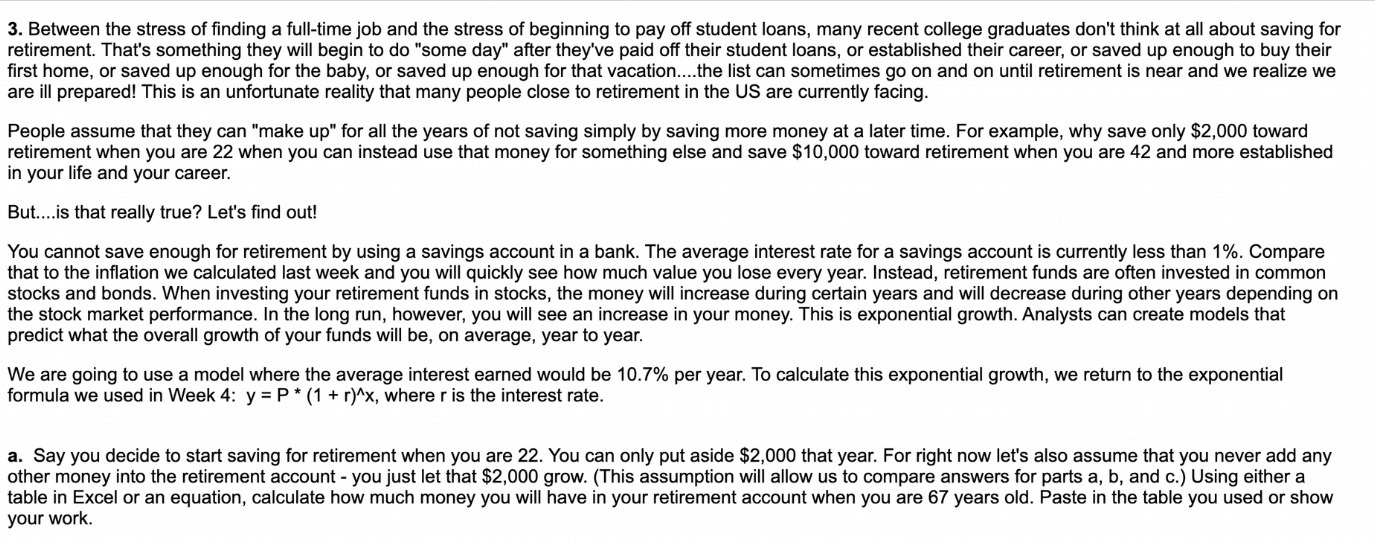3. Between the stress ofnding a tuIl-tirne job and the stress ct beginning to pay o' student loans, many recent college graduates don't think at all about saving for retirement. That's something they will begin to do \"some day" after they've paid off their student loans. or established their career. or saved up enough to buy their first home, or saved up enough for the baby, or saved up enough for that vacation....the list can sometimes go on and on until retirement is near and we realize we are ill prepared! This is an unfortunate reality that many people close to retirement in the US are currently facing. People assume that they can 'make up' for all the years of not saving simply by saving more money at a later time. For example, why save only $2.000 toward retirement when you are 22 when you can instead use that money for something else and save $10,000 toward retirement when you are 42 and more established in your life and your career. But....is that really true? Let's nd out! You cannot save enough for retirement by using a savings account in a bank. The average interest rate for a savings account is currently less than 1%. Compare that to the ination we calculated last week and you will quickly see how much value you lose every year. Instead, retirement funds are often invested in common stocks and bonds. When investing your retirement funds in stocks. the money will increase during certain years and will decrease during other years depending on the stock market performance. In the long run, however. you will see an increase in your money. This is exponential growth. Analysts can create models that predict what the overall growth of your funds will be, on average. year to year. We are going to use a model where the average interest earned would be 10.7% per year. To calculate this exponential growth, we return to the exponential formula we used in Week 4: y = P * (1 + r)"x. where r is the interest rate. a. Say you decide to start saving for retirement when you are 22. You can only put aside $2,000 that year. For right now let's also assume that you never add any other money into the retirement account - you just let that $2.000 grow. (This assumption will allow us to compare answers for parts a. b. and c.) Using either a table in Excel or an equation. calculate how much money you will have in your retirement account when you are 67 years old. Paste in the table you used or show your work







